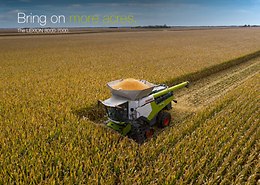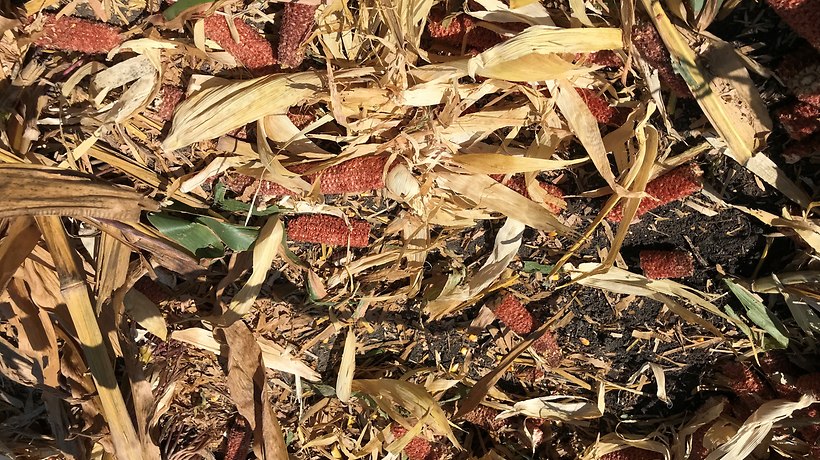

CLAAS LEXION outperforms higher class combines.
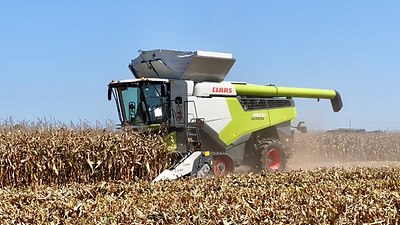
The 2021 Farm Progress Show corn combine demonstrations provided growers an opportunity to watch all major manufacturers side by side in the same field and see for themselves that CLAAS combines leads the industry in grain savings.
Operating a class 8 LEXION 8600TT with a 12-30c corn head, Jeff Gray, Region Product Supervisor-Central, demonstrated that the CLAAS APS SYNFLOW HYBRID threshing and separation system is up for the challenge of keeping more grain in the tank compared to competitive class 9 and class 11 combines from Agco and John Deere, respectively.
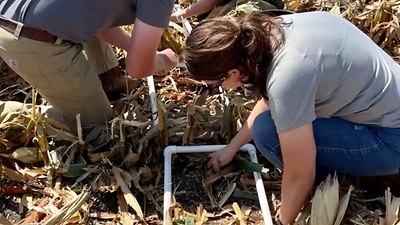
Collecting and comparing losses.
Manufacturer representatives and product specialists set and operated all corporate demonstration combines. In all loss checks collected, the crop was windrowed behind all combines. A six square foot area (6 ft2 from three 24 x 12 inch frames were dropped on the left, center, and right side of the windrow) was checked at the midpoint of the field to count andcheck and collect lost grain from each combine. Three separate passes per combine were collected each day and results for day 1 and day 2 were averaged. All losses were calculated with the John Deere GoHarvest app using whole kernel counts only.
CLAAS LEXION leads in grain savings.
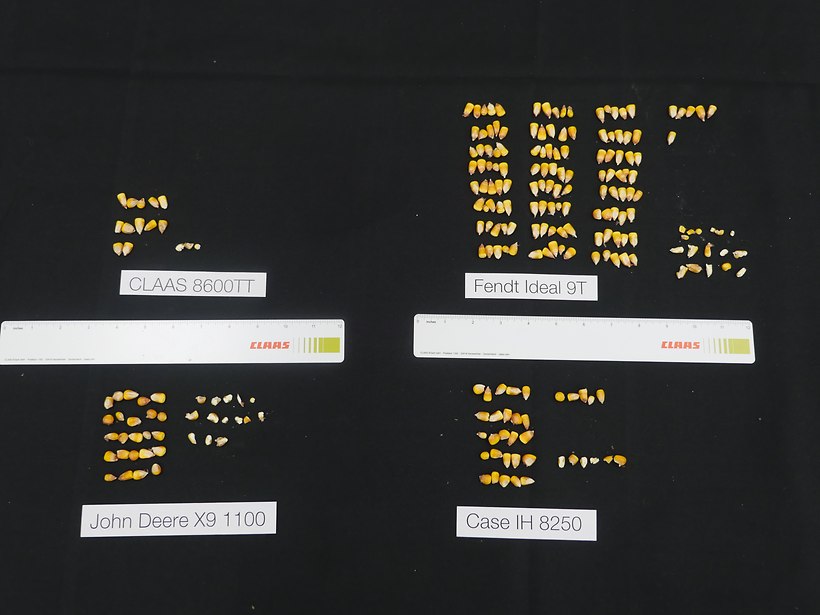
The CLAAS LEXION proved itself in the field, saving nearly twice as much grain as the John Deere X9 1100 and over eight times the grain as the Fendt Ideal 9T combine, which equals $1,125 saved vs John Deere or $8,425 saved vs Fendt per 1,000 acres at a $5 cash corn price.
Crop conditions dictate precise machine settings.
After assessing the crop prior to the combine demonstrations, the CLAAS LEXION 8600TT and corn header were set to account for the varied crop conditions to reduce cob loss in the header while not overthreshing the wetter, spongier cobs seen that morning.
APS SYNFLOW HYBRID system shows its strengths.
The APS SYNFLOW HYBRID system allowed the LEXION combine to harvest the corn with fewer losses and less broken kernels than the competitors. By maintaining a slower threshing speed, the LEXION could gently thresh the wetter corn without breaking cobs or grain and overloading the cleaning shoe while still being able to increase rotor speed and get higher centrifugal force in the separation process to fully separate the corn from the cob, further proving the LEXION provides a significant advantage over competitive combines that cannot adjust threshing and separation separately.
John Deere and Fendt combine performance.
The John Deere X9 maintained just under 0.5 bu/ac loss, however the amount of broken kernels found in the windrow showed the X9 threshing to be far more aggressive and led to more damaged kernels than the CLAAS LEXION. The Fendt Ideal 9T losses were extremely high, leaving considerable grain on the ground behind the combine throughout all demonstration runs. Despite setting and operation by manufacturer personnel, the combine was not able to be match the precise settings capabilities of the CLAAS LEXION and resulted in over 8 times more grain lost by the Fendt combine vs CLAAS.
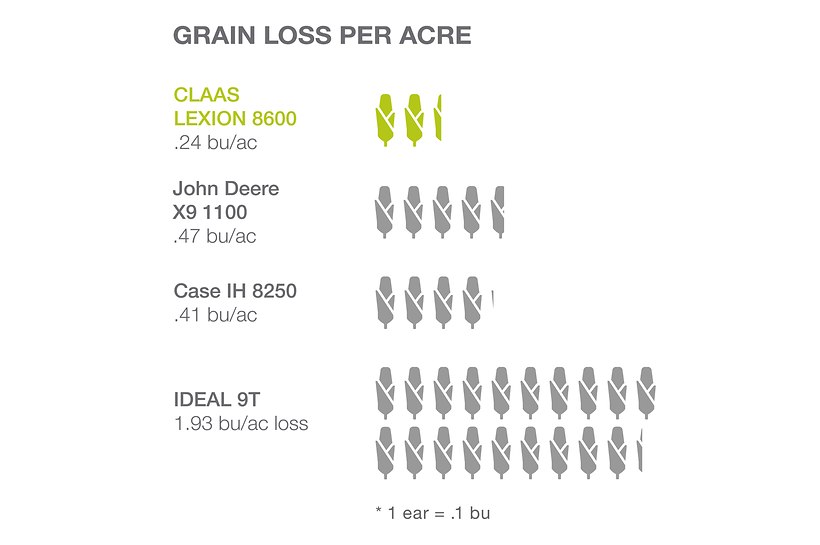
Event calendar
-
DateEvent
-
Jul 16, 2024 - Jul 18, 2024Saskatoon, Saskatchewan
-
Jul 25, 2024 - Jul 25, 2024Baltic, SD
-
Aug 27, 2024 - Aug 29, 2024Boone, IA





